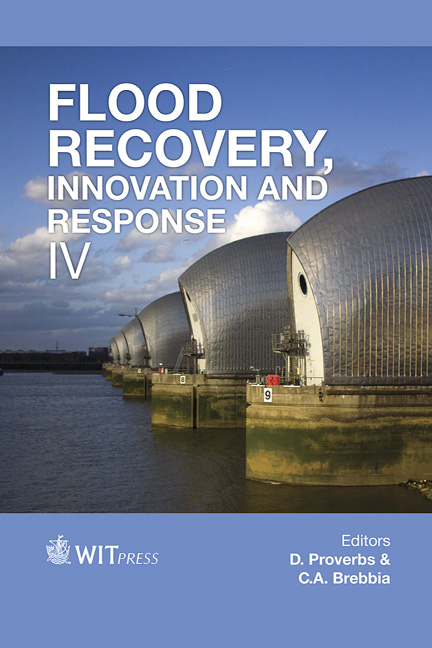Delivering And Evaluating The Multiple Flood Risk Benefits In Blue-Green Cities: An Interdisciplinary Approach
Price
Free (open access)
Transaction
Volume
184
Pages
12
Page Range
113 - 124
Published
2014
Size
1012 kb
Paper DOI
10.2495/FRIAR140101
Copyright
WIT Press
Author(s)
E. Lawson, C. Thorne, S. Ahilan, D. Allen, S. Arthur, G. Everett, R. Fenner, V. Glenis, D. Guan, L. Hoang, C. Kilsby, J. Lamond, J. Mant, S. Maskrey, N. Mount, A. Sleigh, L. Smith & N. Wright
Abstract
A Blue-Green City aims to recreate a naturally-oriented water cycle while contributing to the amenity of the city by bringing water management and green infrastructure together. The Blue-Green approach is more than a stormwater management strategy aimed at improving water quality and providing flood risk benefits. It can also provide important ecosystem services and socio-cultural benefits when the urban system is in a non-flood condition. However, quantitative evaluation of benefits and the appraisal of the relative significance of each benefit in a given location are not well understood. The Blue-Green Cities Research Project aims to develop procedures for the robust evaluation of the multiple functionalities of Blue-Green Infrastructure (BGI) components within flood risk management (FRM) strategies. The salient environmental challenge of FRM cuts across disciplinary boundaries, hence an interdisciplinary approach aims to avoid partial framing of the ongoing FRM debate. The Consortium, comprising academics from eight UK institutions and numerous disciplines, will investigate linkages between human behaviours and physical processes, and produce an urban flood model to simulate the movement of water and sediment through Blue-Green features. Individual and institutional agents will be incorporated into the model to illustrate how their behavioural changes impact on flooding and vice versa. A methodological approach for evaluating the interaction of urban FRM components within the wider urban system will be developed and highlight where, when and to whom a range of benefits may accrue from BGI and other flood management interventions under non-flood and flood conditions. Recognition of the compound uncertainties involved in achieving multiple benefits at scale will be part of the ongoing robust method of uncertainty evaluation. The deliverables will be applied to a chosen demonstration case study, Newcastle, UK, in the final year of the project (2015). This paper will introduce the Blue-Green Cities Research Project and the novel, interdisciplinary framework that is adopted to investigate multiple FRM benefits.
Keywords
Blue-Green Cities, flood risk management, multiple benefits,interdisciplinary, green infrastructure, ecosystem services, pluvial flooding, urbanplanning, and agent-based modelling.





